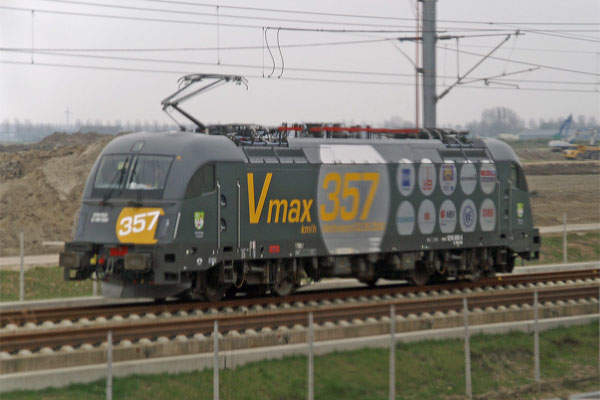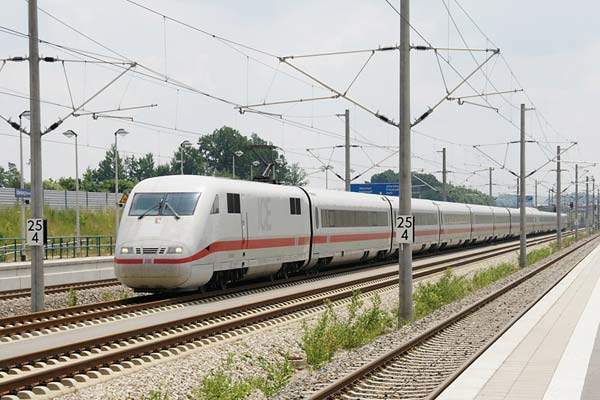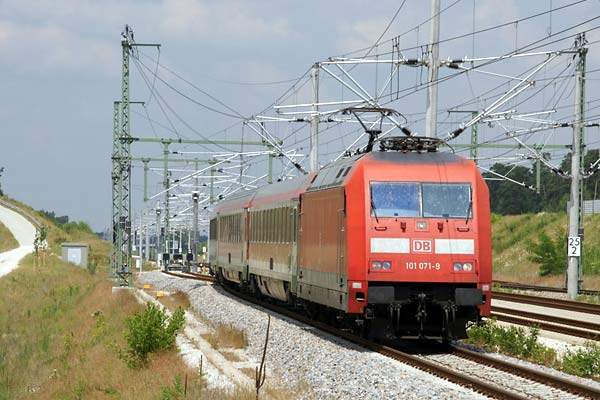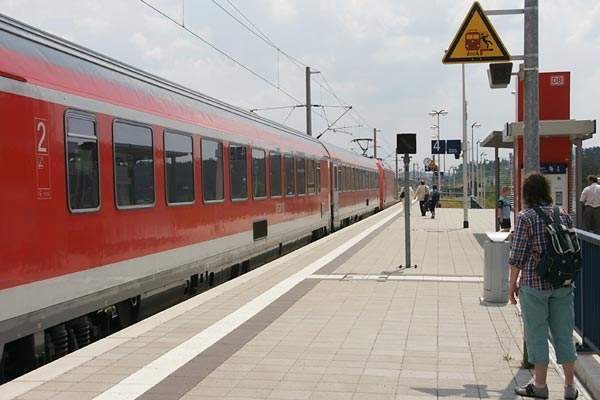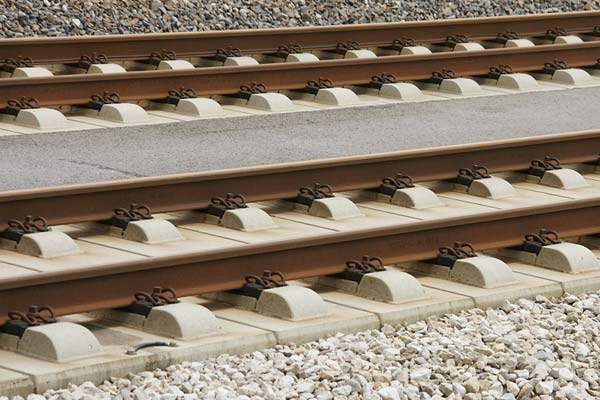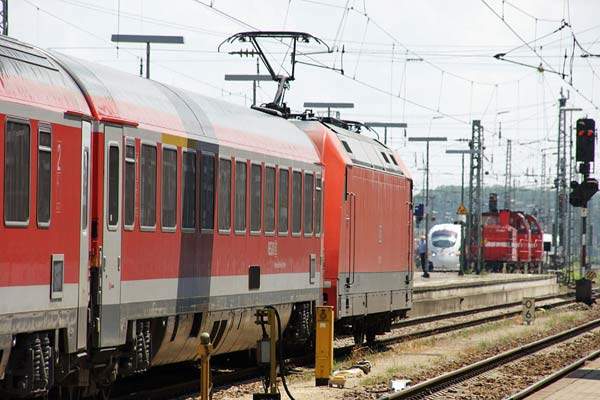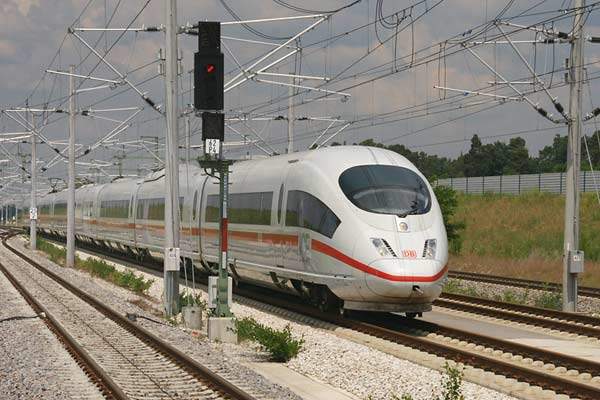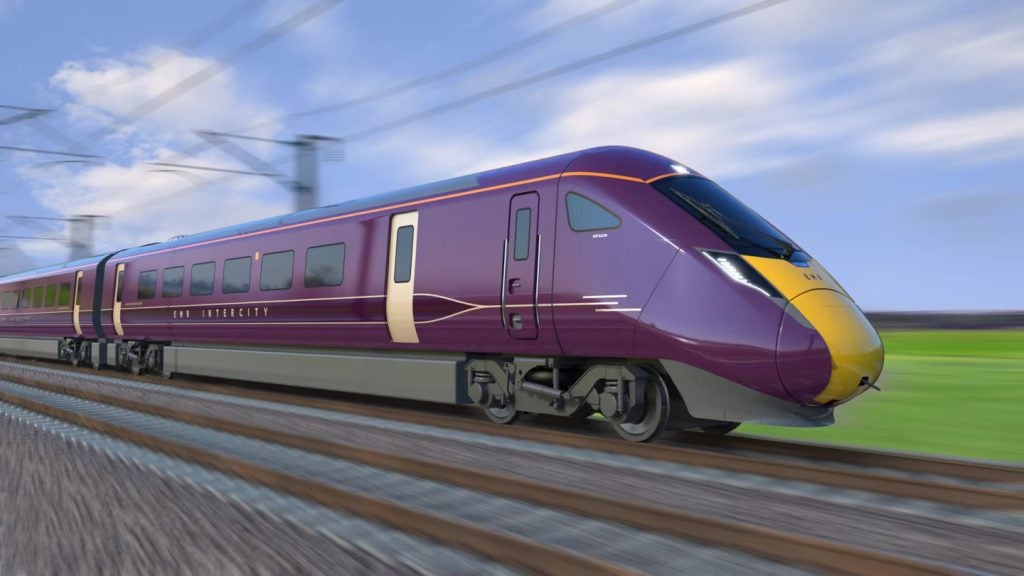After Germany was reunified in 1990, a major priority for politicians was bringing together two transport networks that had developed separately in the previous 40 years. Huge investment was promised for new or upgraded rail and road links linking the former East and West and to bring infrastructure in the east up to western standards.
The first projects focused on linking the restored capital Berlin with northern and western Germany, particularly the heavily populated and economically important Nordrhein-Westfalen region.
With the completion of the Hannover-Berlin Neubaustrecke (NBS) in 1999, attention moved to providing better links from Berlin and the major eastern cities of Leipzig and Dresden to central and southern Germany, notably Munich, the country’s third-largest city and southern terminus for most ICE services.
Journey times of more than six hours between Berlin and Munich were seen by DB as unacceptable, the fastest journeys using ICE services on a roundabout route via Braunschweig and Fulda. Direct services using ICE-T tilting EMUs running over classic lines via Leipzig, Erfurt and Nuremberg took just over seven hours.
INFRASTRUCTURE
A major element of the project was a €3.6bn, 89km high-speed line (NBS) – 78km being entirely new – from Nuremberg to Ingolstadt designed for 300km/h (186mph) operation. South from Ingolstadt, the existing railway has been upgraded to Ausbaustrecke (ABS) standards with running at up to 200km/h over the 82km to Obermenzing in outer Munich. In Munich’s northern suburbs, the Ingolstadt-Munich ABS is also shared with regional, suburban and InterCity trains.
Much of the NBS runs alongside the A9 autobahn, this ‘bundling’ to minimise environmental disruption. The route requires nine tunnels totalling 27km, three constructed by the cut-and-cover method while the remaining six are bored in the traditional manner. The NBS connects with the original route at a new tunnel at Ingolstadt Nord.
Tunnel engineers encountered many geological problems in the mountainous Frankische Alb area, where the limestone rock is said to resemble a Swiss cheese. Tunnels in this area include the 7.7km Euerwang and 7.26km Irlahüll bores. Costs rose substantially as large cavities have to be filled with concrete to allow tunnels to pass through while retaining their rigidity.
In addition, 58 bridges were built in conjunction with the line, including the 305m Grosshoebing Viaduct and a 169m structure over the Main-Danube Canal at Hilpoltstein. New bridges and flyovers at each end of the line segregate ordinary and local trains from ICEs. Unlike the Rhein-Main NBS opened in 2002, there will be no ICE-served stations on the Nuremberg to Ingolstadt section.
Between Ingolstadt Nord and Nuremberg stations on passing loops at Allersberg (Rothsee) and Kinding in Altmuehltal are for mainly two-hourly Regional Express services funded by the Bavarian state government.
To encourage commuter use, the RB-standard ‘Allersberg Express’ shuttle supplements on alternate hours and Allersberg falls within ticketing for Nuremberg’s VGN tariff union. Featuring adjoining park and ride facilities, connecting buses and close access to the A9, business generated by the stations increase usage of this expensive infrastructure.
Also connected via Regensburg, the NBS reduces the Munich-Nuremberg distance by 29km compared to the routing via Augsburg, taking up to 40 minutes off journey time of long-distance trains, also changing the arrival/departure direction at Nuremberg Hbf for these services. Sound-reducing concrete slab track is installed on 75km of the NBS.
To cater for the increased number of trains and the higher speeds, extra tracks were built and several curves realigned.
Maximum speeds vary between 160km/h and 200km/h on this section as conditions allow.
Soundproofing barriers have also been installed extensively on this section in line with current tougher noise legislation. All stations on the ABS have been rebuilt with subways to all platforms rather than level crossings and 16 road crossings have been replaced by bridges.
ROLLING STOCK
No new long-distance rolling stock was ordered for this high-speed line. ICE services work by a mix of ICE1, ICE3 and ICE-T trains. From December 2006 the NBS featured the first Regional Express services (operated by DB Regio) operating at up to 200km/h using Class 101 and former IC coaches with a driving trailer for push-pull operation.
This NBS was the setting for a new world speed record by a locomotive of 357km/h (221.8mph) in September 2006 by the Siemens-built dual-voltage Class ES64U4 ‘Taurus’ 1216.050 of Austrian Federal Railways.
South of Ingolstadt, services also include InterCity locomotive-hauled trains, regional RB and RE services, also Munich S-Bahn suburban services south of Petershausen.
SIGNALLING AND COMMUNICATIONS
The NBS is controlled by two computerised interlockings at Inglostadt Nord and Nuremberg-Fischbach. Trains are controlled by moving block cab signalling which keeps trains at a safe distance from each other by indicating to drivers the maximum speed they should attain.
GSM-R communications have also been specified in line with EU interoperability rules for high-speed lines. On the ABS section south of Ingolstadt, all signalling has been renewed and replaced with a computer-based interlocking at Petershausen.
THE FUTURE
Journey times by most ICE between Nuremberg and Munich have been reduced to just over an hour, with the RE taking 1 hour 45 minutes.
Although a welcome improvement, the real benefits for passengers covering the 500km between Berlin and Munich will only be realised with the mix of ABS upgrades and new build including NBS currently under construction by Deutsche Bahn subsidiary DB ProjektBau GmbH.
Taking around 2 hours off the present best times, the works constituting the Verkehrsprojekt Deutsche Einheit (German Unity) projects VDE 8.1-8.3 covering the Nuremberg-Berlin route have been subject to delay and opposition on cost and environmental grounds, notably with the section through the mountains and forests of Thüringen.
Although elements of the overall scheme such as the re-orientation of services through Berlin and a Leipzig connection are already in place, estimates of full completion have varied between 2015 and 2020.

